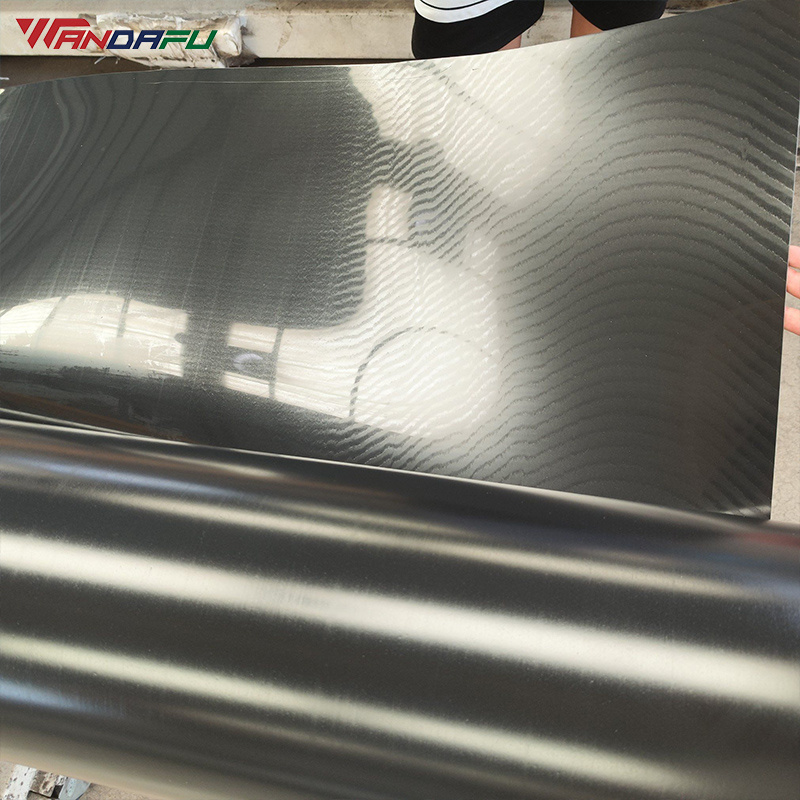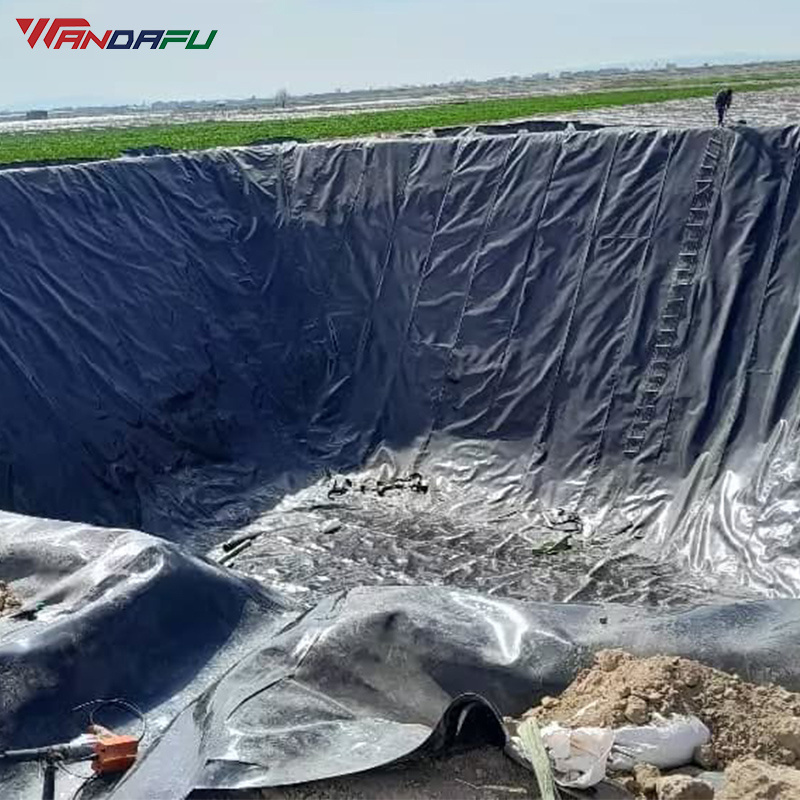
HDPE vs. LLDPE Geomembranes: Key Differences and Best Applications
Release time:
2025-04-11
Geomembranes play a critical role in modern containment systems, serving as impermeable barriers in applications ranging from waste management to water conservation. Among the various polymer options available, HDPE (High-Density Polyethylene) and LLDPE (Linear Low-Density Polyethylene) stand out as two of the most widely used materials. While they share a common polyethylene heritage, their molecular structures create distinct performance characteristics that make each better suited for specific applications.This in-depth guide provides a detailed technical comparison between HDPE and LLDPE geomembranes, examining their material properties, installation requirements, cost considerations, and ideal use cases. Whether you're an engineer specifying materials for a large-scale landfill project or a farmer looking to line an irrigation pond, understanding these differences will help you make the most informed decision for your containment needs.
Introduction: Understanding Geomembrane Basics
Geomembranes play a critical role in modern containment systems, serving as impermeable barriers in applications ranging from waste management to water conservation. Among the various polymer options available, HDPE (High-Density Polyethylene) and LLDPE (Linear Low-Density Polyethylene) stand out as two of the most widely used materials. While they share a common polyethylene heritage, their molecular structures create distinct performance characteristics that make each better suited for specific applications.

This in-depth guide provides a detailed technical comparison between HDPE and LLDPE geomembranes, examining their material properties, installation requirements, cost considerations, and ideal use cases. Whether you're an engineer specifying materials for a large-scale landfill project or a farmer looking to line an irrigation pond, understanding these differences will help you make the most informed decision for your containment needs.
Material Properties: A Molecular-Level Comparison
Density and Molecular Structure
The fundamental difference between these materials lies in their polymer chain structure:
-
HDPE: Features minimal branching in its molecular chains, resulting in:
-
Higher density (0.941-0.965 g/cm³)
-
Greater crystallinity
-
Superior tensile strength
-
Reduced flexibility
-
-
LLDPE: Contains controlled branching through its production process, leading to:
-
Lower density (0.915-0.930 g/cm³)
-
More amorphous regions
-
Enhanced flexibility
-
Improved stress crack resistance
-
Mechanical Performance Comparison
(40 mil thickness standard comparison)
| Property | HDPE Geomembrane | LLDPE Geomembrane |
|---|---|---|
| Tensile Strength | 84 psi (15 kN/m) | 152 psi (26.6 N/mm) |
| Elongation at Break | 18% | 800% |
| Tear Resistance | 28 lbs (125 N) | 22 lbs (98 N) |
| Puncture Resistance | 72 lbs (320 N) | 61 lbs (271 N) |
| Low-Temp Performance | Brittle below -20°C | Flexible to -56°C |

Installation Considerations: Practical Implications
Field Deployment Challenges
-
HDPE Installation:
-
Requires precise subgrade preparation (removal of sharp protrusions)
-
Needs experienced welding crews (higher fusion temperatures: 300-350°C)
-
Limited foldability increases transportation costs
-
More susceptible to stress cracking if improperly handled
-
-
LLDPE Installation:
-
Tolerates minor subgrade imperfections better
-
Lower welding temperatures (250-300°C) reduce energy costs
-
Can be pre-fabricated in panels and folded for transport
-
Better conforms to irregular geometries (e.g., rock protrusions)
-
Welding Techniques Comparison
Both materials use thermal fusion welding, but with key differences:
| Parameter | HDPE Welding | LLDPE Welding |
|---|---|---|
| Optimal Temperature | 320-350°C | 280-320°C |
| Cooling Time | Longer (15-20 min) | Shorter (10-15 min) |
| Seam Strength | 90% of parent material | 85% of parent material |
| Equipment Cost | Higher | Moderate |
Performance in Extreme Conditions
Chemical Resistance
Both materials resist most acids, alkalis, and salts, but differ in:
-
Hydrocarbon Resistance:
-
HDPE performs better with non-polar solvents (e.g., oils, fuels)
-
LLDPE shows superior resistance to polar compounds (e.g., alcohols)
-
-
Oxidation Resistance:
-
HDPE's higher crystallinity provides better UV stability
-
Both contain 2-3% carbon black for UV protection
-
Temperature Extremes
-
High-Temperature Performance:
-
HDPE maintains integrity up to 80°C (176°F)
-
LLDPE softens above 70°C (158°F)
-
-
Low-Temperature Behavior:
-
HDPE becomes brittle below -20°C (-4°F)
-
LLDPE remains flexible to -56°C (-69°F)
-
Lifecycle Cost Analysis
Initial Costs
-
Material Costs:
-
HDPE: 0.65−0.65−1.20/sq.ft (1.5mm thickness)
-
LLDPE: 0.55−0.55−1.00/sq.ft (1.5mm thickness)
-
-
Installation Costs:
-
HDPE typically 15-25% higher due to:
-
More stringent subgrade requirements
-
Higher skilled labor needs
-
Increased welding time
-
-
Long-Term Value
-
Service Life:
-
HDPE: 30-50 years in properly designed systems
-
LLDPE: 20-30 years under similar conditions
-
-
Maintenance Considerations:
-
HDPE's stress crack resistance reduces long-term repairs
-
LLDPE's flexibility minimizes puncture damage over time
-
Industry-Specific Recommendations
Best Uses for HDPE
-
Municipal Solid Waste Landfills
-
Primary and secondary liner systems
-
Final cover systems
-
-
Mining Applications
-
Heap leach pads
-
Tailings impoundments
-
-
Industrial Containment
-
Secondary containment for chemical storage
-
Brine ponds
-
Optimal LLDPE Applications
-
Agricultural Water Management
-
Irrigation ponds
-
Aquaculture liners
-
-
Decorative Water Features
-
Landscape ponds
-
Golf course water hazards
-
-
Temporary Containment
-
Construction dewatering ponds
-
Emergency spill containment
-
Emerging Trends and Innovations
Material Advancements
-
Coextruded Geomembranes: Combining HDPE/LLDPE layers for balanced properties
-
Antimicrobial Additives: For aquaculture and wastewater applications
-
Enhanced UV Stabilizers: Extending service life in exposed applications
Installation Technologies
-
Robotic Welding Systems: Improving seam quality consistency
-
GPS-Enabled Deployment: Optimizing panel layout and material usage
-
Real-Time Leak Detection: Integrated sensor systems during installation
Decision-Making Framework
When selecting between HDPE and LLDPE, consider this four-factor evaluation:
-
Project Duration:
-
Long-term (>25 years): HDPE
-
Short/medium-term: LLDPE
-
-
Environmental Stresses:
-
Chemical exposure: HDPE
-
Temperature extremes: LLDPE for cold, HDPE for heat
-
-
Site Conditions:
-
Flat, stable surfaces: HDPE
-
Irregular terrain: LLDPE
-
-
Budget Constraints:
-
Higher upfront budget: HDPE
-
Cost-sensitive projects: LLDPE
-
Conclusion: Making the Right Choice
The HDPE vs. LLDPE decision ultimately depends on your specific project requirements. While HDPE offers superior long-term durability and chemical resistance for critical containment applications, LLDPE provides exceptional flexibility and cost-efficiency for less demanding environments.
For projects where both strength and flexibility are needed, consider:
-
Multilayer composite systems
-
Site-specific material zoning
-
Hybrid installation techniques
Always consult with geosynthetic specialists to conduct:
-
Site-specific testing
-
Accelerated aging studies
-
Cost-benefit analyses
By carefully weighing these technical factors against your project's unique needs, you can implement a geomembrane solution that delivers optimal performance, value, and longevity.
Latest News



